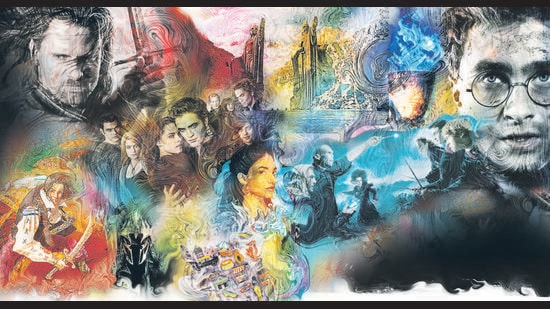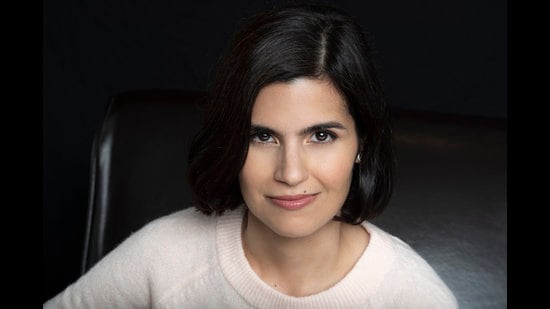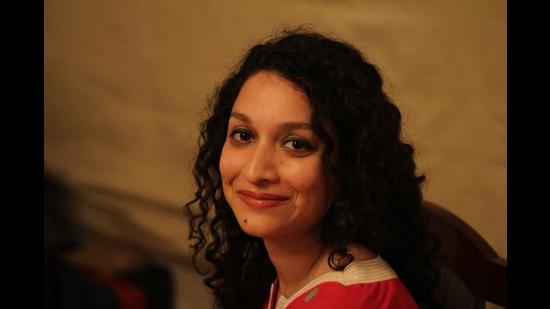Boy wizards to queer princesses, how young adult fantasy fiction is changing
Twenty years after the release of the first Harry Potter film, the genre has gone beyond cauldrons and spells to include gender fluidity, heroines of colour, address racism and violence against women. Meet authors from the subcontinent creating new worlds and see how they ply their craft.
There are some things most works of fantasy fiction have in common — a hero, a journey, a quest, and a battle against a dark and potent force.

Twenty years ago, it was young wizards and witches against Voldemort, led by Harry Potter. Then came the young vampires, werewolves and humans figuring out how to live and love, in the Twilight series, published and adapted for film from 2005 on.
The world changed in this time. It was no longer enough to have good win against evil, if good was always represented by a White male. And so, in 2008, Katniss Everdeen stormed the page (and later the screen), fighting for the young ones in The Hunger Games. Young adult (YA) fantasy fiction was changing, and would change further still. Mainstream works began to make room for gender fluidity and alternative sexuality, for heroes and heroines of colour, for princesses who are ambitious, beautiful and differently abled.
Some of these are books set in fictional worlds created by Indian writers. (The differently abled princess, for instance, is the heroine of Devika Rangachari’s Queen of Ice (Penguin Random House India, 2014)).
“It’s a fast-developing world out there. Today’s young adult is not the easiest reader to publish for. This is a refined and woke generation. These youngsters know exactly what they want,” says Tina Narang, publisher at HarperCollins Children’s Books. Books written for them must also speak to their world — which can be a scary, ever-changing place. “Given that we are actually living in a dystopian world, YA readers want books that connect with that,” Narang says.
The term “Young Adult” was coined by the American Young Adult Library Services Association in the 1960s, to represent the 12-to-18 years age group. In the world of publishing, fantasy fiction for this age group boomed in the wake of the Potter books and films, which created an ecosystem where other writers could explore worlds and stories of their own. Marketing blitzes meant that children around the world were clamouring for the same franchises. Today, social media and streaming platforms have intensified that sense of a global bestsellers list.
But it takes more than wizards and vampires to make the cut. In the 20 years since the first Harry Potter film was released, the world of young adult fantasy fiction has changed to mirror the real world not just in its choice of heroes and heroines but in its plotlines as well. Stories of love and adventure, friendship and largely happy endings have given way to dark tales where not everyone survives, where friends can turn enemies, and where the battles can be bloody and never-ending. The feedback from their target audience, publishers say, is that this is a source of comfort.
“YA fantasy fiction is an escape but is also very empowering. A majority of stories in this genre start out with ordinary people doing extraordinary things,” says Smit Zaveri, editor for children’s books at Penguin Random House India. “It is, in that sense, a safe space for young readers in a troubled world. It offers escape and comfort, as reading in general has always done.”
Amid the publicity and the promotion of Western authors, however, too little attention is paid to some of the remarkable young adult fantasy fiction being written here at home today. Who’s creating these worlds and what do they look like? Wknd speaks to seven authors about how they ply their craft.
TASHA SURI : WRITING OF HOPE, FEAR IN A CHANGING WORLD
From a librarian to a best-selling author, Tasha Suri says the fantasy genre gave her wings.
“I chose to write fantasy because it’s what I’ve always read and loved. It’s a genre that allows you to explore questions, fears and hopes about the real world in interesting and cathartic ways,” says the author now based in London.
Her first book, Empire of Sand (Orbit; 2018), won the British Fantasy Society’s Best Newcomer Award in 2019. It is set in a world named Amrithi (a reference to the food of the immortal gods), and follows a nomadic tribe descended from desert spirits.

“When I wrote it, I was reading a lot about Mughal-era India, so I decided to loosely use that as the basis of the story. I also wanted to centre a story on things that matter to me but are not often but centre stage, like a woman’s strengths and power in a patriarchal world,” she says. Empire of Sand is the story of Mehr, the illegitimate daughter of an imperial governor and an exiled Amrithi mother whose face and magic she has inherited.
Suri’s next work has another unusual theme. The Jasmine Throne, out this month, is a queer fantasy love story that follows a princess and her maid, both of whom have magical powers.
On how the genre has changed
What’s changed in the two decades since the Potter films, Suri says, is the recognition that there is an audience among older teens, for the magic and wonders that the early Harry Potter books embodied.
In response, YA fantasy has evolved to explore themes that appeal to that late-teen audience: adventure, of course; but also coming of age, the difficulty of deciding who you want to be. And how to grapple with a cruel but often wondrous world when you’re not quite a child anymore, but not yet an adult embedded in that world with all the choices adults have.
“I think the genre will continue to grow to encompass the dreams, hopes and fears of a teen audience living in a difficult and ever-changing world,” she adds.
In another significant change, the new YA fantasy books being written on the subcontinent draw from non-Western mythology, history and culture for their world-building and their characters. And they write about these worlds not as elements of the exotic, but with skill and familiarity, “for teens who want to see themselves reflected in fantastical stories, or teens who just want more variety in their reading”.
.
SHABNAM MINWALLA: MAYA, MYSTERY IN MUMBAI
Shabnam Minwalla, 52, spent 10 years working as a newspaper reporter in Mumbai. She married, started a family, quit her job to raise her three children. Struggling, for one reason or another, to return to the workplace full-time, Minwalla decided nine years ago that it was time to write her book.
“I love murder mysteries. They’re my go-to. My plan was to do a murder mystery set in Mumbai. I started writing the book and it was atrocious. It sounded like a long newspaper report,” Minwalla says.
She wanted to get the journalist out of herself and the novelist in, so she read a lot. “I was also reading a lot of children’s books with my own children (then aged six and eight) and wrote my first book, The Six Spellmakers of Dorabji Street (Hachette India), in 2013.” It was a mystery aimed at children aged 11 to 14.
“I think the author in me grew up with my kids. My Nimmi series, about the adventures of an 11-year-old named Nimmi, draws from the stories my girls would tell me about their experiences in school every night,” Minwalla says.
The book Minwalla is best known for came later, the YA fantasy work What Maya Saw: A Tale of Shadows, Secrets, Clues (HarperCollins, 2017).
It is set in an old Mumbai college inspired by St Xavier’s. The protagonist is there for some summer school workshops. Only she can see the Shadows for what they really are, a bunch of gorgeous students who will do anything to keep their youth and beauty. Even kill. Only she can unravel the trail of clues laid long ago by a dead priest. The clues take her across Mumbai and, in the process, she learns about love, friendship and adult responsibility.
On how the genre has changed
What Maya Saw really resonated with her readers, Minwalla says. She believes she has Harry Potter (and later, Twilight and The Hunger Games), to thank for that. “The Potter series did us a huge favour and made publishers realise that YA protagonists could sell books here too,” Minwalla says. “Even series like Twilight, however bad they are, did sell and got the teenagers reading.”
The genre has since gone beyond cauldrons, witches and unfamiliar languages, to mirror reality more closely. “In my books I use real locations in Mumbai – bakeries, the seaside, Colaba Causeway,“ Minwalla says.
On her favourite recent work
Rebecca Stead’s When You Reach Me (Wendy Lamb, 2009) is a fabulous time-travel novel set in 1978-79 New York, Minwalla says. It follows a young woman who receives a strange note asking her to record future events and decipher clues to reveal the identity of a time traveller. “It’s a great combination of fantasy and mystery.”
.
TANAZ BHATHENA: ARMED WITH MAGIC, COURAGE
Tanaz Bhathena wanted to be an author since she was 13, but didn’t think she had the imagination for fantasy. Growing up, in Mumbai, then Saudi Arabia and then Canada, where she now lives, she read a lot of Western fiction about witches, werewolves and vampires, while also watching TV shows based on Hindu mythology.
Her first book, A Girl Like That (Penguin Random House India, 2018), didn’t draw on those worlds. It was an earnest look at the life of a 16-year-old girl rebelling against sexist double standards and exploring sexuality, love and vulnerability. “After that, I wanted to write something different,” Bhathena says.

After trying and failing to write a sci-fi dystopia, a friend suggested she add magic to the mix. “I set it in medieval India, a historical period I was obsessed with as a teen.” That story became Hunted by the Sky (Penguin Random House India, 2020), about a woman named Gul navigating prophesies, destiny, salvation and love while attempting to destroy the evil King Lohar in the magical land of Ambar.
On fantasy and diversity
YA fantasy fiction has changed tremendously in just the past six years, Bhathena says, and part of the credit goes to the global We Need Diverse Books movement. This started as a hashtag on Twitter in 2014, prompted by the announcement of a panel of all-White, all-male children’s authors at BookCon in New York that year.
The movement grew into a global discussion about the lack of diversity and representation in children’s literature. A non-profit organisation of the same name began to work to promote diversity in works of fiction aimed at the young, and began to lobby publishers to pick up more diverse books.
As markets grew more diverse in the same period, with teens looking to see themselves and their worlds acknowledged on the page, authors began moving away from the White protagonist’s quest for victory and including people of colour and of marginalised backgrounds in key roles.
“Earlier, these ethnicities would typically feature as villains,” Bhathena adds. “I think it will only get better with time, as more young authors are finding the courage to express themselves and play with the genre’s tropes.”
Up next
Bhathena’s sequel to Hunted by the Sky, Rising like a Storm is due out in June. “It was pouring out, racing ahead faster than I could write it,” she says. Gul returns, this time to fight an evil queen with the potent mix of love, magic and courage.
.
SUKANYA VENKATRAGHAVAN: CRAFTING BRAVE NEW WORLDS IN TIMES OF CHAOS
Sukanya Venkatraghavan’s first book, Dark Things (2016), won its publishing contract through a newspaper contest. “They invited first chapters of books and I sent mine in. That’s how I got my publishing deal with Hachette India,” she says.

Fantasy was the obvious choice, Venkatraghavan adds, because even though she began her career as a journalist, she has always lived with one foot in another world. “For seven years I was an only and very lonely child. I lived in a very old, rambling house with secrets of its own. It sparked my imagination. My grandfather used to tell me stories, buy me books. My childhood was full of magic, parallel universes, different realms and monsters.”
Venkatraghavan, 42, was also deeply influenced by the writings of fantasy fiction writers Neil Gaiman (The Sandman series; American Gods; The Ocean at the End of the Lane) and Samit Basu (The Simoqin Prophecies).
Dark Things is about a yakshi who seduces men and steals their secrets. It features an evil underworld goddess, apsaras, a world of three realms and more.
On the rise of the woman author
What has changed most significantly in this genre, Venkatraghavan says, is there are many more woman writers now, in India and around the world. The state of the world is another reason more people, in a wider range of age groups, opt for young adult fantasy fiction. “The more the world slips into political, social and environmental chaos, the more people seek escape in a world of fantasy where you know things will most likely end well,” Venkatraghavan says. “People are always going to want stories of courage, hope and magic.”
.
SHAZAF FATIMA HAIDER: ENSURING ORAL TALES OF JINNS, FAIRIES LIVE ON
For Shazaf Fatima Haider, 38, genres are the creation of publishing houses and bookshops. She doesn’t believe in them.
“I was interested in the folklore of the subcontinent and putting the monsters and magical creatures I had grown up with on the page,” says the 38-year-old. That’s how A Firefly in the Dark (Speaking Tiger, 2018) happened. The book is about a girl called Sharmeen who discovers jinns, shapeshifters and other dastardly creatures in her old and rambling ancestral home.

“Living on the subcontinent means living with the ghosts of dead people and fairies and jinns. They are our favourite scapegoats and mechanisms of escape and tools of horror,” says Haider, who is based in the UK. “I found that everyone around me had a great oral story to tell but didn’t think it was ‘important’ enough for literature. I wanted to change that.”
It was a very different story from her first book, How It Happened (Penguin UK, 2012). “That was a satire on arranged marriage. I was going through being introduced to men and their families and I hated every moment of it. I published it at 29, after I got divorced, and have been writing ever since.”
Haider believes the world has always loved magic and tales about things that can’t be explained. Every so often, you get a phenomenon like Game of Thrones or the Harry Potter series and they revitalise that interest, she adds. But it never goes away.
“There is virtue in a good story, about characters that are vulnerable, ambitious and flawed, who live in an unpredictable world. And that’s what people relate to.”
.
KEVIN MISSAL: FLAWED HEROES IN MYTHS RETOLD
He wrote his first book at 14. Damien Black: The Battle of Lost Ages (Diamond Books, 2011) was about a boy from a clan of hunters, who sets off on an adventure to hunt down dark creatures. “I have been writing my own stories since I was 12. When I wrote Damien Black, my friends hated it,” laughs Kevin Missal, 24. “Looking back I realise it was a total mishmash of Percy Jackson and Harry Potter… with not much original thought.”

Missal has written seven works of young adult fantasy fiction since. Most incorporate mythology from Indian and Arabian cultures. “I feel all fantasy writing stems from mythology,” says the 24-year-old author.
Dharmayoddha Kalki: Avatar of Vishnu (Kalamos Literary Services, 2018), the first of a Kalki trilogy, became a bestseller, selling about 1 lakh copies. Missal’s latest, Sinbad and the Trumpet of Israfil (Penguin Random House India, 2021), casts the legendary sailor Sinbad, of the Thousand and One Nights, as neither villain nor hero, but as a striving adventurer, a flawed man always chasing his next triumph.
On fantasy and inclusivity
“Harry Potter and Percy Jackson books taught me how to be a good person. Harry, Ron and Hermione’s friendship taught me loyalty and the important of friends. The way Rick Riordan made ADHD and dyslexia part of Percy’s powers in …The Lightning Thief (2005) made a lasting impression. I wanted to write something that would have a similar lasting effect during these impressionable years of my YA readers’ lives,” Missal says.
His own books seek to be inclusive too. “In Sinbad, one of the characters is queer and one is non-binary.”
It’s nice how many of today’s YA fantasy books are inclusive and diverse, he adds. In Six of Crows by American author Leigh Bardugo, two of the main characters are people of colour and some of the smaller characters are queer. Percy Jackson author Rick Riordan has evolved, adding to his books non-binary characters such as Alex Fierro, a gender-fluid teenage demigod who has been appearing in the Magnus Chase and Gods of Asgard series since 2016.
“YA fantasy is a getaway to a world of fantasy and reality both. It keeps the readers both grounded and dreaming,” Missal says. “It’s exciting that the genre is unpredictable, just like its readers.”
.
OLIVIER LAFONT: DEVAS, DEMONS, SPECIAL EFFECTS
Over the past decade, Olivier Lafont, 41, has gone from actor based in India (for 30 years; you might remember him as Kareena Kapoor Khan’s fiancé in 3 Idiots) to YA fantasy fiction writer. Books like Warrior (Penguin Random House India, 2014) and The Rise of the Midnight King (Speaking Tiger, 2019) feature demigods, zombie clowns, flying deities and magical animals.

Warrior was shortlisted for the Tibor Jones South Asia Prize in 2013 and The Rise of the Midnight King was on the Neev Book Award 2020 shortlist in the Junior Readers category.
“I became conscious of reading and loving fantasy around the age of nine,” says Lafont, now based in Paris. “I assume there’s a point in time when some children ‘grow up’ and leave behind fantastic stories for other real-world interests. I just continued being entranced.”
Warrior is a mythological fantasy about Saam, Shiva’s earthly demigod child, who must save Mumbai from the end of days. Lafont’s latest, …Midnight King, follows the adventures of a group of teens from a mountain village after they stumble upon Yakshagarh, the Himalayan retreat of rakshasas, warrior statues, yakshas and devas, and a shadowy Midnight King.
On how the genre has changed
Streaming and special effects are shaping the evolution of YA fantasy fiction, Lafont says. “If the Harry Potter books had been adapted in the 1980s they would not have had the kind of realistic cinematic treatment that post-The Matrix special effects could give them in the 2000s. The success of the first Harry Potter and The Lord of the Rings films heralded the end of any significant practical (ie, special effects) barrier to adapting fantasy books for film and TV.”
Fantasy books were once considered the domain of “nerds” and “geeks”, he adds. “All of a sudden, fantasy has become something that everyone openly claims to like. Film and OTT adaptations of fantasy fictions made this possible — the beginnings of the Netflix-style model in the mid-2000s, as well as the blurring of geographic and cultural boundaries as a result of social media.”
There was always demand for fantasy content, but the pan-media supply only began to match it (via technological progress) in the early 2000s. “Now that the global supply-demand chain is running coherently, in technological, cultural, and cross-media distribution terms, the fan base and readership have grown. All fantasy publishing has to do now is put out great works and promote great authors,” Lafont says.
On his favourite recent works
“I have read and loved Neil Gaiman’s American Gods (2001),” Lafont says. “It features a hero, Shadow, whose mother is African-American and whose father is the Norse god Odin. It’s a relatively early example of inclusivity in mainstream fantasy. I also loved Who Fears Death (2010) by Nigerian-American author Nnedi Okorafor. It’s a coming-of-age story set in a post-apocalyptic Africa, with a focus on racism and violence against women.”
Catch your daily dose of Fashion, Health, Festivals, Travel, Relationship, Recipe and all the other Latest Lifestyle News on Hindustan Times Website and APPs.
Continue reading with HT Premium Subscription





